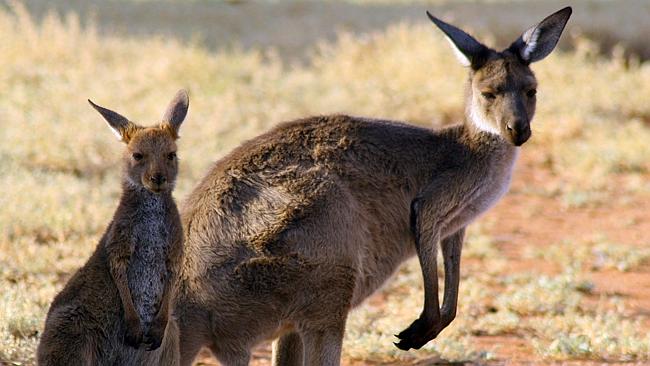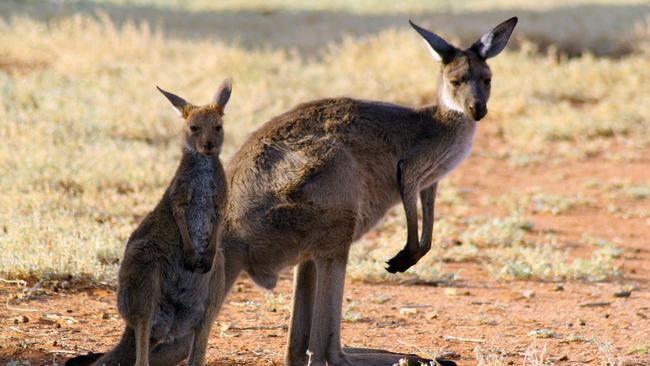Kangaroo fart theory could help research into livestock methane
ADAM Munn has spent months capturing farts from kangaroos. Don’t worry, there’s a really good reason for it.

ADAM Munn has spent months capturing farts from kangaroos.
And don’t worry, there’s a really good reason for it.
The Aussie biologist’s unenviable research into kangaroo farts may have disproved a theory about methane gas in animals and could help inform new efforts to fight climate change.
Scientists are urgently trying to find a way to reduce the amount of methane produced by Australian livestock.
In the year to March 2015, agriculture accounted for 15 per cent of Australia’s greenhouse gas emissions. And the agricultural sector is the nation’s dominant source for methane.
Researchers have long known that unlike sheep and cattle, kangaroos produce very little of the potent greenhouse gas methane.
They’ve also suspected that roos might have a unique mix of microorganisms in their stomachs that produce less of the gas. They hoped that by transplanting these microorganisms, flatulent sheep and cattle might produce less methane.
That’s where Dr Munn, from the University of Wollongong, came in. In his roo study, red and western grey kangaroos were kept in comfy, sealed chambers, allowing researchers to analyse to mix of gases going in and coming out.
His findings showed that researchers were actually on the wrong track about kangaroo microorganisms.

“We think that the methane is low (in kangaroos) because of the way food moves through the kangaroo stomach, and not because of a unique gut fauna,” Dr Munn told AAP.
Dr Munn said more research needed to be done to work out the contribution various species made to greenhouse gas emissions.
He said information would be valuable to Australian farmers in the future, under any carbon pricing or credit system.
“We need to understand where do the ruminants sit, compared to other wildlife that aren’t heavily domesticated for production systems,” he said.
“If we know that, there may be, for example, some benefit for land managers to having a lower density of (methane) intensive animals, and having mixed species grazing, instead of single species grazing.”
The research is the work of Dr Munn, Professor Marcus Clauss from the University of Zurich, and PhD student and vet Catharina Vendl.
It was carried out at UNSW Fowlers Gap Arid Zone Research Station in far western NSW, and the findings have been published in The Journal of Experimental Biology.



